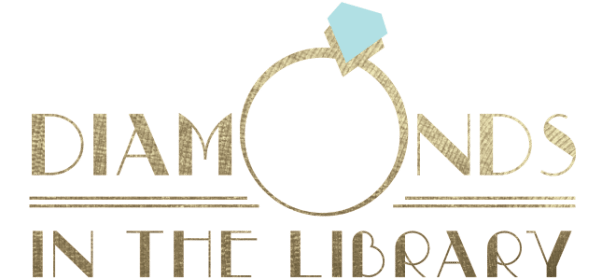I had such a cool post idea for today, darlings. I was going to write everything I knew about suffragette jewelry: about how the use of green, white, and violet means “Give Women the Vote” and how many great examples there were of suffragette jewelry online.
 Here’s the thing: before I write anything for you, even if I’m writing about something I think I know, I do research. I went looking for information on suffragette jewelry expecting confirmation of what I already knew plus maybe a detail or two.
Here’s the thing: before I write anything for you, even if I’m writing about something I think I know, I do research. I went looking for information on suffragette jewelry expecting confirmation of what I already knew plus maybe a detail or two.
But lo and behold: most of what I know about suffragette jewelry is wrong. Or if not actually wrong, at least drastically oversimplified.

What I thought I knew: jewelry from the late 1800’s and early 1900’s with a color scheme of green, white, and violet is suffragette jewelry! The colors stand for the acronym “Give Women the Vote.” Suffragettes are awesome, jewelry is awesome, this is all awesome.
This turned out to be partly true.
At least one of the most popular suffragette groups – the Women’s Social and Political Union (WSPU) did claim the colors purple, white, and green (in 1908). But not because it makes up an acronym; rather, because the WSPU felt that the three hues represented qualities that every suffragette had: nobility/dignity, purity, and hope.
The WSPU also never said “Give Women the Vote” at all. Their rallying cry was “Votes for Women.”
 That’s not to say there was never any high end jewelry produced in the purple/green/white color scheme that was an intentional nod to the suffragette movement: we have primary source proof that there was. (Image source.)
That’s not to say there was never any high end jewelry produced in the purple/green/white color scheme that was an intentional nod to the suffragette movement: we have primary source proof that there was. (Image source.)
Mappin & Webb, a renowned London jeweler, dedicated a page of their 1908 Christmas catalog to green, white, and purple suffragette jewelry. At least some high end suffragette jewelry definitely existed – pretty pieces that I imagine mostly on elegant noncombatants, like the mom from Mary Poppins, rather than on the women who were getting arrested.
But such pieces would only have been produced for a small window of time: after the WSPU declared their colors in 1908 but before the start of World War I in 1914.
 In the United States, suffragettes were more likely to wear celluloid buttons (a recent invention) demanding votes for women or to sell their jewelry to raise money for the cause. (Image source.)
In the United States, suffragettes were more likely to wear celluloid buttons (a recent invention) demanding votes for women or to sell their jewelry to raise money for the cause. (Image source.)
Also worth noting: the suffragettes were not a subtle bunch. Expressing their beliefs in secretly color coded jewelry really is off-brand for them, for the most part.

 Lot 89: An Important Platinum, Aquamarine and Diamond Necklace, Tiffany & Co., Circa 1915.
Lot 89: An Important Platinum, Aquamarine and Diamond Necklace, Tiffany & Co., Circa 1915. Lot 40: A Carved Coral Flexible Bracelet, Circa Mid 19th Century.
Lot 40: A Carved Coral Flexible Bracelet, Circa Mid 19th Century.


